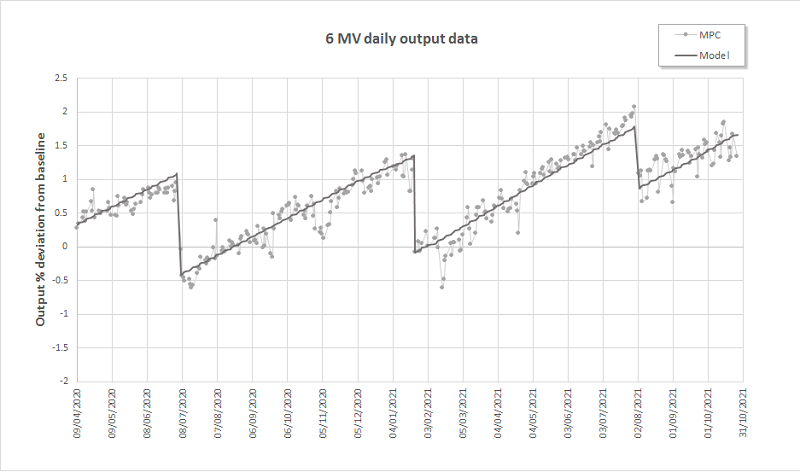Output prediction for TrueBeam linear accelerators
Giuseppina Rita Borzi',
Italy
PO-1586
Abstract
Output prediction for TrueBeam linear accelerators
Authors: Giuseppina Rita Borzi'1, Elisa Bonanno1, Nina Cavalli2, Giuseppe Stella3, Martina Pace3, Zirone Lucia3, Carmelo Marino4
1Humanitas, Istituto Clinico Catanese , Department of Medical Physics, Misterbianco (CT), Italy; 2Humanitas, Istituto Clinico Catanese, Department of Medical Physics, Misterbianco (CT), Italy; 3University of Catania, School of Medical Physics, Catania, Italy; 4Humanitas, Istituto Clinico Catanese , Department of Medical Physics , Misterbianco (CT), Italy
Show Affiliations
Hide Affiliations
Purpose or Objective
The aim of this work is to find a simple and
effective mathematical method to predict the output variations of TrueBeam (Varian Medical Systems, Palo Alto, CA, USA) linear
accelerators (Linacs), using the daily output measurements performed with Machine
Performance Check (MPC) tool.
Material and Methods
Three
TrueBeam Linacs version 2.7, all placed in Humanitas ICC radiotherapy department,
were equipped with the aS1200 portal imager. The MPC application is an
automated tool, integrated into all three Linacs, allowing to perform a check
of beam output, uniformity and various geometric parameters, utilizing a
dedicated phantom and the imaging system.
All daily output data, measured with MPC from
April 2020 to October 2021, were exported and plotted for all energies to
visualize the trend. The first step was to identify the dates of absolute dose
calibration, performed in accordance with the IAEA TRS-398 protocol. Then, in
order to generalize the results, the measurement period was divided into five
sub-periods, common to the three Linacs, taking into account the calibration
dates. Finally, a trend line was applied to the data of the series
corresponding to each sub-period. Moreover, daily data were compared with
monthly output measurements performed by means of ionization chambers and RW3
phantom.
Results
The
output of all the TrueBeam Linacs under examination, measured with both MPC and
ionization chambers, showed an increase for all photon and electron energies
(on average +4% per year), in agreement with the literature findings. Output
data for the 6 MV energy are representative of all the energies and all the
Linacs. Output calibrations and subsequent MPC re-baselines resulted in sudden
drops of output towards baseline.
The regression line fitted the data quite well
and represented the average Linac output. The angular coefficient of each line
characterized the rate of output increase in the time interval considered. We
found that the difference in output increase for all three Linacs and for each
sub-period was not statistically significant (p>0.3), so it was possible to
generalize using a universal angular coefficient that indicated the daily amount
of output drift (on average 0.016%). Applying the linear mathematical model to our
daily output data evaluated with MPC, the trends of Figure 1 were obtained. The
overall output increase found with the model is 0.34% per month, comparable
with the literature data.
Conclusion
In this study, linear regression analysis was
used to predict the TrueBeam output drift over time and a unique factor
identifying the rate of increase was found. Therefore, MPC with daily output
measurements is a reliable tool in predicting TrueBeam output behavior and helping
physicists to find the right timing for preventive beams calibration throughout
the year. Further investigation is needed to eventually include in the analysis
other factors affecting the output such as seasonal fluctuations and environmental
factors.